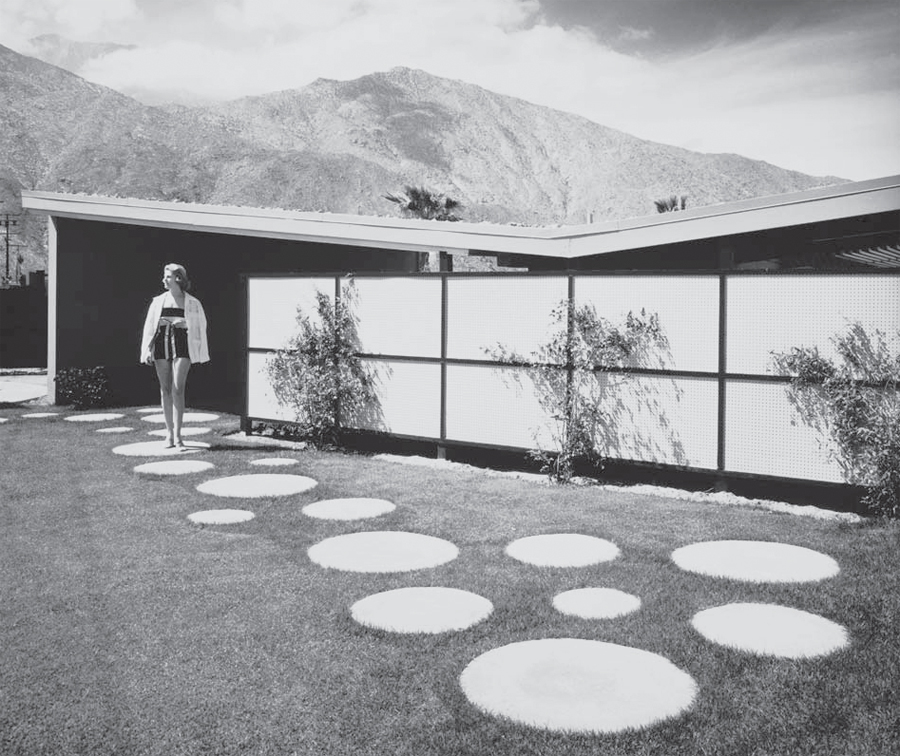Lords of the Lens - Page 3
 |
2. JULIUS SHULMAN
Page through a book like the 1961 Mid-Century Architecture in America and you will notice: if there is a spread of five or six photos, and one is more dramatically lit or with a more dynamic composition, it is likely by Shulman.
Shulman (1910-2009) began his career at age 26, when he met modernist architect Richard Neutra—and never parted ways with him. One of Shulman's most iconic shots shows the pool at Neutra's Kaufmann House in Palm Springs, a feminine figure posed alongside like a Greek goddess.
Another was shot at a Case Study house. (Shulman shot most of the cutting-edge Case Study homes, which were promoted by Arts & Architecture magazine.) That 1960 photo, considered a classic for many years, shows two women chatting in a glass-walled home designed by Pierre Koenig that floats over a glowing Los Angeles below.
More than a photo of a prime Koenig, the photo is an artistic statement of its own. Architectural critic Paul Goldberger called it "one of those singular images that sum up an entire city at a moment in time." Unlike some of his compatriots, Shulman frequently posed people in his photos.
 |
|
|
Even when photographing a simple, minimalist box, like the Los Angeles office for architect William Beckett, Shulman turned it into a spectacle.
In a nighttime image from that shoot, the exterior mass is dark and brooding, while the interior glows with an angelic fire. With paired chairs representing clients facing the architect's desk, the interior image is shot from above at an acute angle, creating a composition that recalls abstractions by artists of the 1920s De Stijl movement.
Shulman did much work for Eichler's architects Jones & Emmons. One such photo, of the 1954 home A. Quincy Jones designed for himself, emphasizes its spatial complexity.
It's a cinematic shot, like something from a romantic von Sternberg film, steel posts and slender beams in the entryway casting long shadows, tall plants in shadow, a mysterious figure approaching us, the diagonal composition adding energy.
Shulman worked till near the end of his life, in later years with a younger collaborator.




